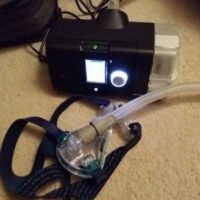15 Nov Sleep Apnea Increases Amyloid Load In Brain, A Hallmark of Alzheimer’s Disease
MedicalResearch.com Interview with:
Ricardo S Osorio MD
Center for Brain Health
Department of Psychiatry
Center of Excellence on Brain Aging
NYU Langone Medical Center
New York, NY 10016, USA
MedicalResearch.com: What is the background for this study? What are the main findings?
Response: This was a study that was performed in a group of healthy normal elderly from the community that volunteered for studies on memory and aging.
The main findings were that sleep apnea was very common, in almost all cases undiagnosed, and that it was associated with a longitudinal increase in amyloid burden which is considered one of the hallmark lesions of Alzheimer’s disease
MedicalResearch.com: What should clinicians and patients take away from your report?
Response: There is already some evidence of this association in the literature.
However, most studies published so far have been either epidemiological or cross-sectional. Epidemiological studies in most cases include subjective measurements of sleep either by questionnaire or by self-report of presence/absence of a sleep disturbance.
This is a problem because, even though it might sound a little counterintuitive, people are not great at evaluating whether they sleep well or bad (i.e. they might claim that they have insomnia but sleep 7 hrs or they might have undiagnosed sleep apnea, PLMS, etc, etc.) Cross-sectional studies have the limitation of not being able to establish causality, and this is relevant because Alzheimer’s disease specifically disrupts sleep, so there’s a chance that what you might be seeing is an early manifestation of AD and not a sleep problem like OSA increasing the risk of Alzheimer’s disease. This study uses objective measurements of sleep (home monitoring for OSA and actigraphy) and is longitudinal (measures AD-biomarkers over time) so it is one of the first to show in humans, that at least in cognitively normal individuals it is the sleep that might be driving the amyloid deposition and not vice versa.
MedicalResearch.com: What recommendations do you have for future research as a result of this study?
Response: The prevalence of sleep apnea in the elderly is very high, ranging form 30-80% depending on how you define it. In addition, in most cases it is asymptomatic, meaning that most subjects are not sleepy during the day and are not aware that they are suffering from this condition. In other cases they just don’t have a sleep partner which is in many cases the person that can observe the apneas during the night and makes the referral to the sleep doctor. In a person at risk for Alzheimer’s disease and OSA, clinical interventions aimed at OSA (such as treatment with CPAP or dental appliances) could mitigate the progression of cognitive impairment and delay the onset of the disease.
MedicalResearch.com: Is there anything else you would like to add?
Response: No disclosures from my end. Some of my collaborators have shared patent with a manufacturer of CPAP machine.
MedicalResearch.com: Thank you for your contribution to the MedicalResearch.com community.
Citation:
Ram A Sharma, Andrew W Varga, Omonigho M Bubu, Elizabeth Pirraglia, Korey Kam, Ankit Parekh, Margaret Wohlleber, Margo D Miller, Andreia Andrade, Clifton Lewis, Samuel Tweardy, Maja Buj, Po L Yau, Reem Sadda, Lisa Mosconi, Yi Li, Tracy Butler, Lidia Glodzik, Els Fieremans, James S Babb, Kaj Blennow, Henrik Zetterberg, Shou E Lu, Sandra G Badia, Sergio Romero, Ivana Rosenzweig, Nadia Gosselin, Girardin Jean-Louis, David M Rapoport, Mony J de Leon, Indu Ayappa, Ricardo S Osorio. Obstructive Sleep Apnea Severity Affects Amyloid Burden in Cognitively Normal Elderly: A Longitudinal Study.. American Journal of Respiratory and Critical Care Medicine, 2017; DOI: 1164/rccm.201704-0704OC
Note: Content is Not intended as medical advice. Please consult your health care provider regarding your specific medical condition and questions.
[wysija_form id=”1″]
Last Updated on November 15, 2017 by Marie Benz MD FAAD


